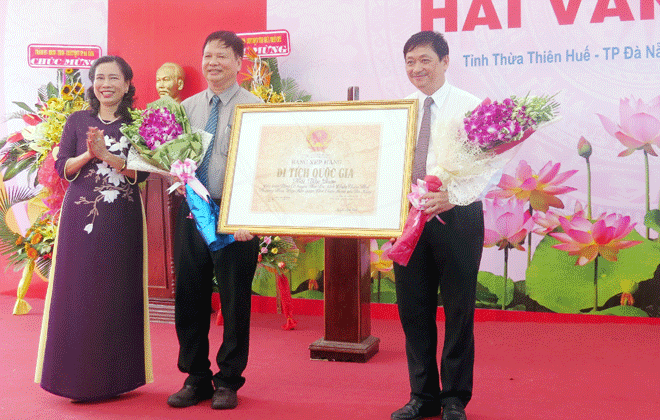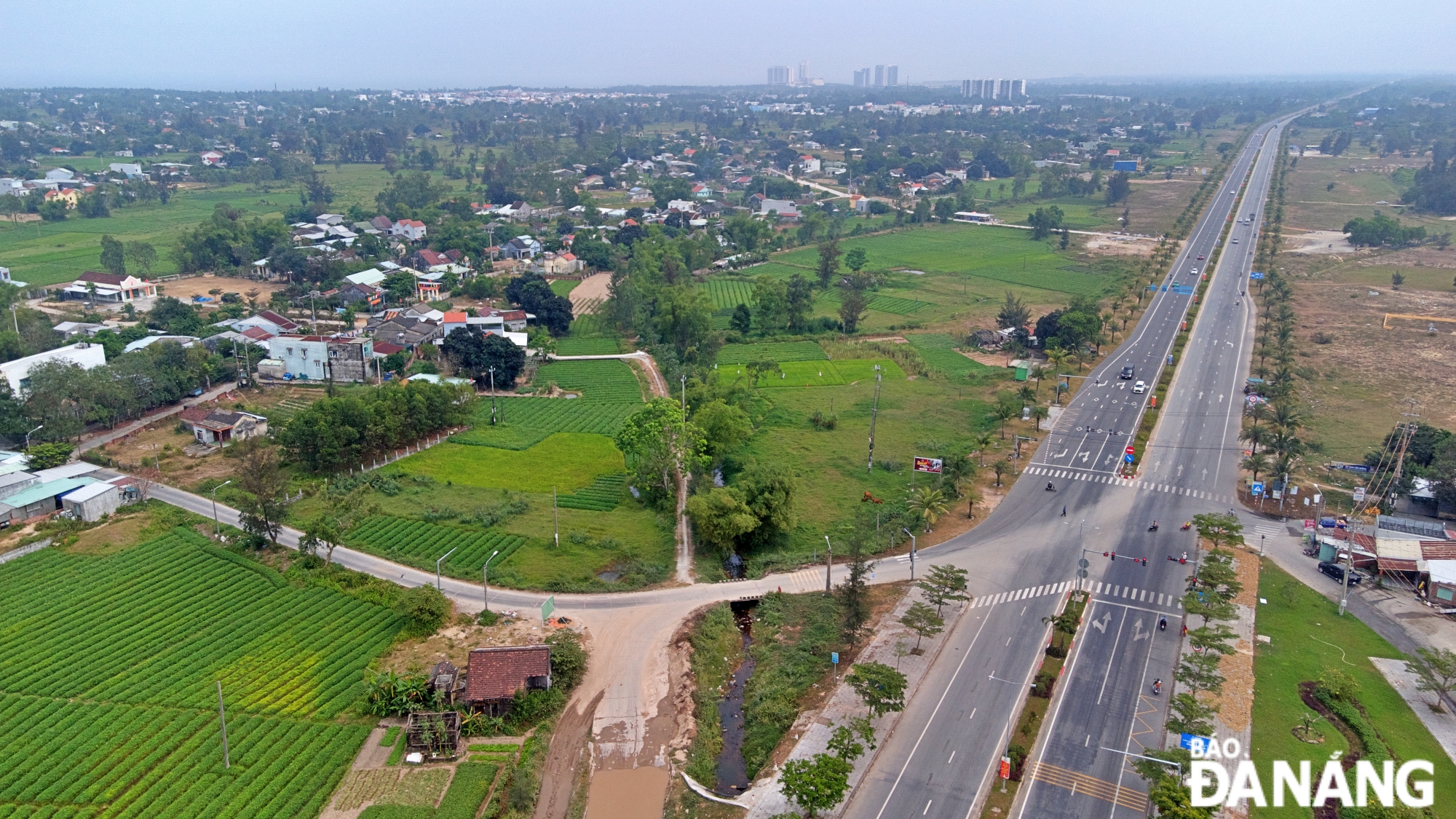Certificate presented for Hai Van Gate national relic
In April, the Vietnamese Ministry of Culture, Sports and Tourism officially recognised the Hai Van Gate as a national relic site due to its profound historical, architectural and artistic value. The gateway, completed in 1826, is located at the geographical boundary between Da Nang and Thua Thien-Hue Province.
 |
| Deputy Minister Lien (1st left) presenting the recognition certificate to Vice Chairman Dung (1st right) and a representative from the province |
On Wednesday, the authorities of the 2 localities jointly held a ceremony at the site to receive the certificate of recognition.
In attendance were Deputy Minister for Culture, Sports and Tourism Dang Thi Bich Lien, Da Nang’s People’s Committee (PC) Chairman Huynh Duc Tho and PC Vice Chairman cum Head of the Department of Publicity and Training Dang Viet Dung, Thua Thien-Hue’s Party Committee Secretary Le Truong Luu and its PC Vice Chairman Nguyen Dung.
Vice Chairman Dung asked the Ministry to continue assisting the 2 localities in managing, preserving and promoting the cultural and historical values of the site in the years ahead. The 2 localities will release regulations regarding tightening the management of the Hai Van Gate, and develop effective plans to preserve and restore the relic site.
 |
| The authorities of the 2 localities agree an MoU on jointly managing the site |
Vice Chairman Dung re-affirmed that the Hai Van Gate is the joint-owned cultural heritage of the 2 localities, and it symbolises the spirit of solidarity between them.
Fully concurring with the city, provincial PC Vice Chairman Nguyen Dung remarked that the relic site will help to bolster the tourism and services sectors of the 2 localities, and it will act as an important link between the North and South Central regions.
Deputy Minister Lien asked the 2 localities to widely publicise the image of the Hai Van Gate, thereby raising the public’s awareness of the need to conserve and uphold the values of this relic site and make it a tourist attraction over future years.
She also proposed that a project should be deployed as soon as possible to upgrade the gate, in combination with furthering the tourism of the 2 localities. Also, that special attention be paid to appealing for more public investment into programmes for conserving and promoting the values of the site.
The ceremony also saw representatives from the 2 localities entering into a Memorandum of Understanding (MoU) on jointly managing the site.
 |
| Erecting a marker in front of the gate |
The gate sits at the top of the Hai Van Pass which runs approximately 21 km across a spur of the larger Annamite Range that juts into the East Viet Nam Sea. Located at 490m above sea level, Hai Van Gate literally means ‘ocean cloud gate,’ referring to the mists that sometimes rise from the sea and reduce visibility.
In 1826, during the reign of Emperor Minh Mang, a rampart and a fortified gateway were built at the top of the Hai Van Pass. Combining nature and the creations of man, the gate deserves its name ‘the most marvellous wonder’ which was given to it by Emperor Le Thanh Tong when he went sightseeing there. Despite its long history, the gate is still solid but is now covered with moss.




